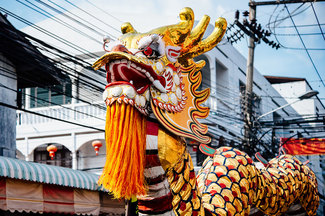Phuket Vegetarian Festival
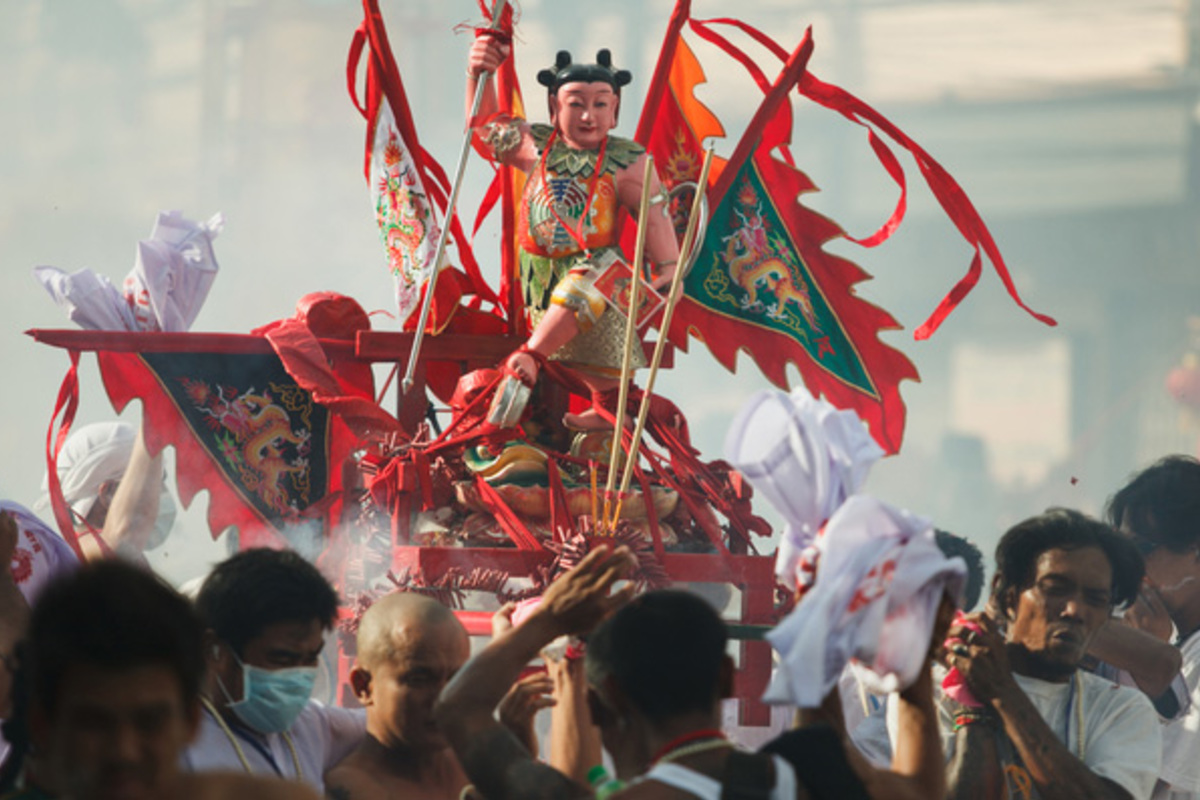
For those who appreciate a little gruesome spectacle every now and then, Phuket Town’s Vegetarian Festival, เทศกาลกินเจ - Thetsakaan Kin Jeh, will likely fit the bill admirably. Held for nine days, beginning on the ninth day of the ninth month of the Chinese lunar calendar, it is celebrated in Phuket, where about 35% of the population is of Thai-Chinese ancestry, in spectacular fashion.
Though the origins of the festival are obscure, it is said to date back to an event in 1825, when a Chinese Opera troupe visiting the island to entertain the Chinese tin miners, settled in the Kathu district, fell ill with malaria and decided to effect a cure by not eating any products derived from animals, abstaining from sex and alcohol, while praying to the Nine Emperor Gods to purify mind and body. To the amazement of the locals they recovered and the event has been celebrated ever since to honour the gods.
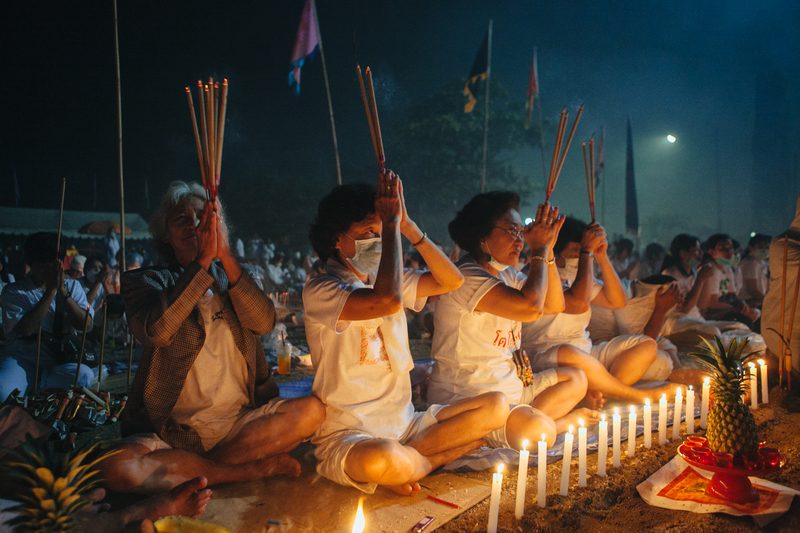
Thailand is a predominantly Buddhist country and Phuket also has a significant Muslim population but the origins of the Vegetarian Festival are to be found in Chinese Taoism. A significant portion of Phuket's population is of Chinese descent from the migrant workers who came to work in the island's tin mines from the 1700s onwards.
Phuket Town is the best place from which to view the festival’s events and processions, the first of which is the Pole Raising Ceremony, the Seng Ko Teng Thiao, which is performed to alert the gods of the Chinese pantheon, and every shrine and temple on the island will perform this ceremony.
There are a number of colourful processions in Phuket Town that set off from a great many temples and shrines located around the town as well as fire walking ceremonies, oil bathing and bladed ladder climbing. These painful and often gruesome rituals, such as body piercing and other acts of self-mutilation, performed by mediums, known as ม้าทรง – Mah Song, are designed to invoke the gods and the devotees who undertake these painful act are said to receive protection from harm. Mah is the Thai word for horse and is in this context suggestive of how the gods use these mediums (‘entranced horses’) as a vehicle of incarnation for the duration of the festival.
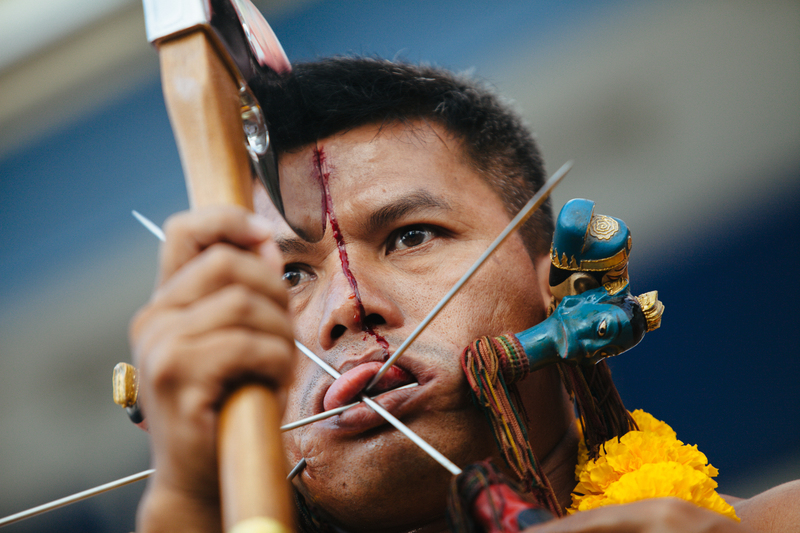
Men and women, ostensibly possessed by the gods, puncture their cheeks, tongues and various other parts of their anatomy with all manner of objects, apparently feeling little or no pain in the process. The Mah Song must adhere to a strict set of ten fundamental rules in order to participate but part form showing due respect onlookers are not bound by these conventions. Only spiritually pure, unmarried men or women without families of their own can become Mah Song. At the various temples around Phuket Town they undergo a series of rituals to protect them for the duration of the festival, during which flagellation and self-mutilation is practiced to bring good fortune to their communities.
Every year the rituals become more spectacular and bizarre and have begun to attract an ever-increasing number of foreign visitors, entranced by performances and rituals seen nowhere else. These rituals of self-mutilation are believed to derive not from any Chinese tradition but rather the Hindu festival of Thaipusam, celebrated wherever in Southeast Asia there are significant populations of Tamil Hindus and perhaps best witnessed at the Batu Caves in Malaysia. The number of Mah Song devotees normally numbers in the hundreds. It is, however, not as chaotic as it appears, as the Mah Song are carefully monitored by event organisers and doctors to prevent serious injury or infection.
The food of course is entirely vegetarian, a huge range of delicious dishes, barely distinguishable from the meat-eaters usual diet. Meat is replaced by soya bean and other protein substitutes and it is almost impossible to tell that it’s not meat, and has the added advantage of being much healthier. Restaurants indicate that jeh, vegetarian, food is available by flying a yellow flag outside with the word เจ (jeh) written on it in red. All the participating temples will also have stalls offering a bewildering array of mouth-watering dishes.
There are more than 40 shrines and temples located around the island. Many are just small buildings but they all actively and enthusiastically participate in all aspects of the festival. Tourists who want to experience the most of this event should visit the major shrines including the five oldest shrines in Phuket; Put Jaw, Jui Tui, Bang Niew, Cherng Talay, and Kathu Shrine.
To fully appreciate the festival you should aim to stay in Phuket Town and, once you know the start and finish point for the day’s procession, position yourself early at one of the many vantage points from which to view the various spectacles. On all of the final seven nights amazing processions take place, beginning from a different temple each night, taking hours to complete, with a cacophony of drums and fireworks to drive away the evil spirits, culminating in the final night’s stupendous festivities, and the highlight of the festival.
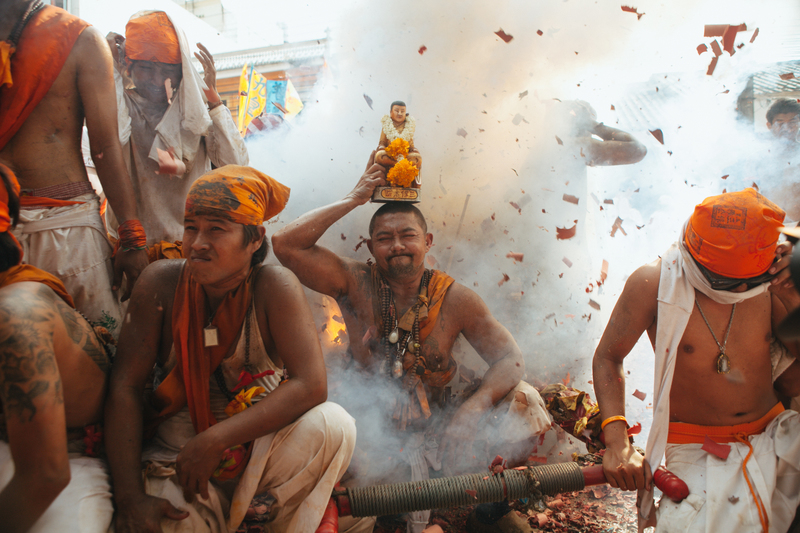
This is when the procession and Mah Song come under an amazing bombardment of fireworks that create such havoc that it begins to resemble a race more than a stately progress through the streets. The onslaught from onlookers becomes so intense that the final stretch is more like a charge to the finish line. Finally the procession heads towards the Saphan Hin shrine for the final ritual which sends the gods back to heaven for another year and then the thoroughly exhausted revellers disperse to make their weary way back to home or hotel and savour one of Thailand’s most unique and exciting cultural extravaganzas.










of collaborative energy




Before proceeding to use the website please carefully ready our Terms and Policies
I accept Diwerent's Terms and Conditions and Privacy Policy










